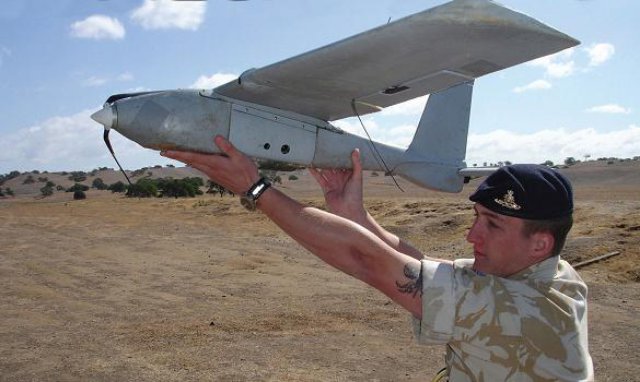 Almost 450 UAS operated by the British military have crashed, broken down or been lost in action during operations in Afghanistan and Iraq over the last five years, figures reveal.
Almost 450 UAS operated by the British military have crashed, broken down or been lost in action during operations in Afghanistan and Iraq over the last five years, figures reveal.
The Ministry of Defence has disclosed for the first time the five Unmanned Aircraft (UAS) Systems used in the conflicts and the number that have perished due to pilot error, technical faults or the undesirability of retrieving them from hostile areas.
The figures highlight the military’s increasing reliance on technologies that are regarded as a way of minimising risks to frontline troops. Officials say the UAS have operated for thousands of hours on sensitive operations.
But the disclosure has also raised concerns among campaigners about their reliability. They say that some of the smaller UAS, which are more prone to crashes, are similar to those already being flown in UK airspace.
The MoD released details of the UAS incidents under the Freedom of Information Act, conceding that their operations were “viewed by some as contentious and there is therefore strong public interest in being as open and transparent as possible” about their use.
The figures show the military has lost one Reaper since 2007 – it is the only UAS that carries Hellfire missiles as well as surveillance and intelligence-gathering equipment. The drone, which has not been replaced, cost £10m.
There have been nine losses of another large UAS, the Hermes 450. Eight of the £1m aircraft were lost in Afghanistan and another in Iraq. The surveillance fleet has halved in size because of the incidents.
The UAS to suffer most is the Desert Hawk 3, a small hand-held UAS used by the army: 412 have crashed or been lost in the last five years. British forces have been using other mini-UAS, the Black Hornet, and the Tarantula Hawk, in Afghanistan; 25 of them have perished during operations. The Black Hornet is the latest piece of UAS equipment to be deployed in the conflict.
Faced with a mounting bill for the crashes, and fewer UAS to use, the MoD has admitted that it is trying “to increase airmanship standards in a number of areas” by updating training courses. But officials also insist the UAS are being worked hard in difficult conditions, and breakdowns are to be expected.
The Hermes fleet has been in the air for 75,000 hours, and the Desert Hawks have undertaken more than 30,000 missions, the MoD said. Despite the high loss rate, the military believes the Desert Hawk still provides “indispensable and flexible” intelligence to UK ground forces – and value for money.
“Every crash is investigated so we can try to learn the lessons,” a spokesman said. “The UK operates a number of UAS in Afghanistan which provide our frontline troops with vital intelligence and help to save lives. Reaper is the only armed UAS used by British forces and the rest are unarmed surveillance and reconnaissance assets. No deaths or injuries have resulted from the loss of any UAS and a thorough investigation is carried out into any incident that results in a UAS not being recovered or irreparably damaged.
“Lightweight mini or nano UAS like Desert Hawk 3 and Black Hornet can be more susceptible to harsh operational conditions and if they fail to land outside the confines of a safe area are sometimes not recovered in order to prevent any risk to life in retrieving it. This can result in a higher loss rate than larger tactical or strategic UAS such as Hermes 450.”
Photo: Desert Hawk
Source: The Guardian
